Don't wanna be here? Send us removal request.
Text

Looking to outsource BIM services? Discover how outsourcing can cut costs, boost efficiency, and scale your AEC projects faster with expert BIM support. https://www.virtualbuildingstudio.com/blog/outsourcing-vs-in-house-bim-services-for-aec-industry/
0 notes
Text
Discover how converting PDFs to intelligent BIM models streamlines design workflows, enhances collaboration, reduces errors, and accelerates project delivery—empowering architects to work smarter and more efficiently in today’s fast-paced construction environment.
0 notes
Text
BIM Clash Detection Services with Navisworks: Key Benefits
The necessity of precise positioning leads to BIM clash detection services becoming a crucial part of the project design and execution process.

The AEC professionals turn to cutting-edge technology to streamline project management and enhance collaboration, and Navisworks, an Autodesk software, stands out as an effective tool for integrating clash detection services in a project.
What is Navisworks?
Autodesk Navisworks is a potent software that offers an effective solution by precisely identifying clashes at the project design stage. It generates clash detection reports for project stakeholders by analyzing the geometric and time data of the models developed by them separately.
The software is highly capable of integrating various models of a project from different fields, including architectural, MEP, and structural, leading to better coordination and visualization.
Read More: BIM Clash Detection: Process, Advantages and Best Practices
Extensions of Navisworks
The Navisworks offers different drawing extensions that can be used as per the project working stage and model requirements:
NWF — Federated Files
An NWF file contains indexed data of all the models in use and stores all data opened in Navisworks.The amendments will be reflected in the model when it gets opened in Navisworks.
NWD — CAD file
This file format is used to publish and share the compiled version of the ongoing project for other members to review.
If one does not have Navisworks, one can still use Freedom to review the file. This allows the file owner to retain the source file and share a secure NWD file further.
Case Study: 3D BIM Model Clash Detection, and Coordination Building
Benefits of Using Navisworks for BIM Clash Detection Services
The technology market is continuously innovating and offering various effective versions of software to enhance the functioning of the AEC industry.
Better Collaboration and Coordination
It enables the creation of ‘federated models’ where separate models are positioned in their specific coordinates in a common environment for better project coordination and visualization.
The user can share files and data including clash reports by dividing the bigger files into smaller and simplified versions without losing loyalty.
Minimizing Errors and Discrepancies
The clash detection feature of Navisworks allows the project stakeholders to promptly identify clashes or conflicts in the early stages, minimizing the possibility of errors during construction.
The clash detective tool is used to detect clashes and discrepancies by conducting clash tests between point clouds and 3D BIM models.
Read More: Top Ways of Integrating MEP BIM Coordination for Contractors
Minimized Cost and Time Investment
BIM clash detection services with Navisworks provide a holistic view of the project, facilitating the optimization of construction schedules.
This process eliminates the need for manual clash verification, which can be a laborious job with possibilities of errors and clashes.
Conclusion
BIM clash detection services have altered the landscape of building construction by enabling stakeholders to visualize, understand, and eliminate clashes at pre-construction stages.
Navisworks will dominate this sector with ample features like easy file-sharing, photorealistic visualization, time-based clashes, and automated referencing of multiple CAD files.
Original Source: Benefits of BIM Clash Detection Services with Navisworks
Insightful Article:
BIM Services and LiDAR : A Perfect Combination for Quality Construction
Unveiling the Benefits of MEP BIM Services for General Contractors
0 notes
Text
5D BIM : Barriers & Embracing Benefits- Boon for Every Cost Estimator
In the dynamic realm of the Architecture, Engineering, and Construction domain, the adoption of 5D BIM Modeling services has drastically transformed project management and collaboration, enabling more accurate cost estimation, enhanced visualization, and streamlined workflows while facilitating real-time data integration across multiple disciplines for more informed decision-making.
Read more:
0 notes
Text
How Hiring Dedicated Resources is Driving Growth in the USA’s AEC Industry

As per a study by Microsoft, the top three reasons for employees to leave the company are:
Poor work-life balance(43%)
Lack of career growth opportunities(44%)
Low pay and benefits(44%)
So, to hire and retain top talent from the global AEC industry, companies need to work on building relationships and providing satisfactory experiences to their employees.
What is Remote Hiring in Architecture?

Remote Hiring involves hiring dedicated remote architects who perform the assigned tasks from the comfort of their preferred locations, using digital tools and platforms to collaborate with project stakeholders.
Success Story: Global Automotive Leader Relies on Our Experts for Scan to BIM
Why is Hiring Dedicated Remote Architects Beneficial?
Dedicated remote resources are professionals who are extremely focused on specific projects or clientele, providing expertise and undivided attention.
The shift towards remote work has proven beneficial for the architectural industry in several ways. Here are some of the primary advantages of hiring dedicated remote architects in the USA:
Access to a Wider Talent Pool
The remote hiring process provides the opportunity to tap into the global talent pool and recruit professionals with diverse skills and expertise.
Removing the geographical constraints and hiring professionals from across the globe can enrich the design process with varying perspectives and innovative solutions for the AEC companies.
Cost-Efficient Outcome
Remote architects often use their resources further reducing the operational costs. These savings enable the firm to allocate finances more strategically to technology adaptation, growth initiatives, or firm marketing.
Multiplied Productivity and Efficiency
The absence of a traditional office setting eliminates the surrounding distractions and allows the architects to focus on their assigned tasks. The multiplied efficiency and productivity eventually translate to high work quality.
Read More: Hire Top 1% Architects and Engineers in 3 Days
What are the Challenges of Remote Hiring?

The firms are supposed to address these situations to ensure successful project development. The challenges are:
Team Dynamics and Synergy
The AEC firms must invest in team-building activities, regular virtual meet-ups, and collaborative platforms to develop a cohesive and motivating work culture.
Management and Oversight
Integrating strategies that focus on results rather than micromanagement, define clear expectations, and provide autonomy to architects is a suitable approach for AEC firms.
Regular check-ins, performance evaluations, and feedback sessions should be conducted to ensure accountability and alignment with project goals.
Communication Barriers
Hiring Dedicated Resources can sometimes lead to communication barriers, particularly when team members are located across different time zones or languages.
Read More: Hiring In-House Architect vs Dedicated Remote Architect
A Step-by-Step Guide for Hiring Dedicated Resources in the USA
Remote hiring requires a systematic process to ensure the selection of the right talent. Here’s a step-by-step guide to navigating the hiring process:
Trace Clear Project Requirements:
Firms should clearly define project requirements before initiating the remote hiring process, including specialized skill set, expertise, and experience needed.
An extensive job description:
A detailed job description is crucial to attract qualified and skilled professionals for the available position. The description should outline key responsibilities, qualifications, and required skill sets.
Evaluate Technical Proficiency:
Assigning practical tasks or technical assessments can be a suitable approach to selecting the right individual for the role. After selecting the ideal candidate, the firms can hire dedicated resources and initiate the onboarding process.
Dedicated Resource Model (DRM): An Alternative to the Conventional Remote Hiring Approach
Successful integration of Remote hiring practices requires implementing approaches and models that foster collaboration, innovation, and accountability.
One such remote hiring model is the Dedicated Resource Model (DRM) by Virtual Building Studio, which is working at the forefront of this paradigm shift in the conventional way of approaching and hiring remote talent.
Integrating the DRM solution allows the AEC firms based in the USA to connect with more than 200 skilled remote architects and engineers specialized and trained for US-based firms and are available for immediate hiring.
Merits of Adopting DRM solutions
Access to the top 1% of the architects and engineers driving team expansion
The Talent pool is selected through an extensive process of online tests, HR interviews, written tests, and technical interviews
Access four top-grade professionals for the cost of one
Case Studies: Seamless Integration of DRM
To illustrate the impact of hiring dedicated architects and engineers, let’s look at a few case studies depicting the successful integration of DRM solutions into the projects.
Sunway Construction- A Malaysia-based construction company embraced hiring dedicated resources to access a wide talent pool of architects and engineers. They expanded a dedicated team of 30 architects and engineers in just 2 months.
Conclusion
The future of the AEC industry is intertwined with Remote hiring, as technological advancements continue to reshape the industry.
Hiring dedicated remote architects in the USA offers a transformative approach to architectural projects, amalgamating the benefits of global talent, cost efficiency, and innovation.
Original Source: How is Hiring Dedicated Resources Nurturing the AEC Industry in the USA?
Insightful Article:
How Does 3D Architectural Visualization Profoundly Impact the AEC Industry?
8 Common Mistakes to Avoid in AEC Outsourcing: Effective Alternatives and Solutions
0 notes
Text
How the Paris 2024 Olympics Revolutionized Construction with BIM

The Paris Olympics 2024 aimed, and has now claimed, to be one of the most sustainable games ever with an emphasis on reduced carbon footprint, reuse of resources, and redistribution of energy.
With around 35 stadiums hosting 15 million visitors, this grand undertaking required a strong built form and efficient planning to maintain these spaces throughout the games. Building Information Modeling (BIM) played a prominent role in positioning the 2024 games at the forefront of innovation infused with sustainability.
BIM Initiatives for the Paris Olympics 2024
Building Information Modeling (BIM) played an integral role in several key projects for the Paris Olympics 2024. The list of initiatives includes:
The Olympic Village:

Plaza de La Concordia (Urban Sports Pavilion):

The use of BIM enabled the designers to create a built form that adheres to Olympic regulations and can be utilized by the local community after the games.
The State de France:

BIM played a critical role during the renovation process in planning the upgrades that ensured efficient and timely completion of the venue.
Aquatic Center:
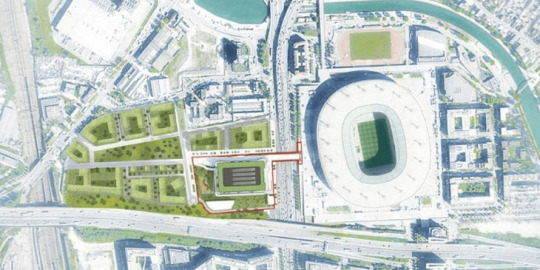
The rooftop of the center has a concave rooftop and a massive wooden structure which reduces the 30% of the air volume to be heated.
Shaping the Future of Building Construction with BIM
Building Information Modeling (BIM) software is an ideal approach to incorporate strategies to reduce, repurpose, and reuse venue design and execution.
The BIM model provides a detailed design analysis, providing specific dimensions and material specifications to renovate existing structures and to build temporary structures.
BIM integration fosters seamless collaboration and communication among project stakeholders by providing a unified digital model, minimizing misconceptions, and ensuring consistent efforts.
Enhanced Asset Management
BIM models are digital twins of the built form, enabling efficient facility management throughout the building lifecycle.
Early Conflict Detection
BIM models run a thorough design analysis and enable the early identification of design conflicts, such as oversized beams, or pipe intersections.
Systematic Planning and Scheduling
Using BIM for project design and development facilitates the creation of detailed construction plans and scheduling different project phases.
Conclusion
The implementation of BIM at the Paris Olympics 2024 is not only setting a revolutionary benchmark for future sports events but also symbolic of the power of technology to transform the AEC industry.
Original Source : How did the Paris Olympics 2024 revolutionize construction with BIM?
Insightful Article:
Hiring In-House Architect vs Dedicated Remote Architect: Identifying The Suitable Choice
Rapid Onboarding for the AEC Industry: Hire Top 1% Architects and Engineers in 3 Days
0 notes
Text
How Hiring Dedicated Resources is Driving Growth in the USA's AEC Industry
Explore how hiring dedicated remote resources is reshaping the AEC industry in the USA. Discover the benefits of accessing global talent, enhancing productivity, and reducing costs, along with insights on overcoming challenges in remote team management. Learn how innovative hiring strategies are driving the future of architectural projects.
Read more:
0 notes
Text
Hiring In-House Architect vs Dedicated Remote Architect
Explore how hiring dedicated remote resources is transforming the AEC industry in the USA. Discover the advantages of tapping into global talent, boosting productivity, and cutting costs, while also gaining insights into overcoming the challenges of managing remote teams. Learn how forward-thinking hiring strategies are shaping the future of architectural projects.
Read More:
0 notes
Text
Rapid AEC Onboarding: Hire Top 1% Architects & Engineers in 3 Days
Discover how the AEC industry can streamline hiring with a 3-day onboarding process. By leveraging Virtual Building Studio's Dedicated Resource Model (DRM), firms can quickly integrate top 1% architects and engineers, reducing costs and boosting productivity. Learn how this innovative approach saves time, ensures cultural fit, and enhances project outcomes with minimal recruitment setbacks.
0 notes
Text
Choosing Between In-House and Remote Architects: Which is Best?
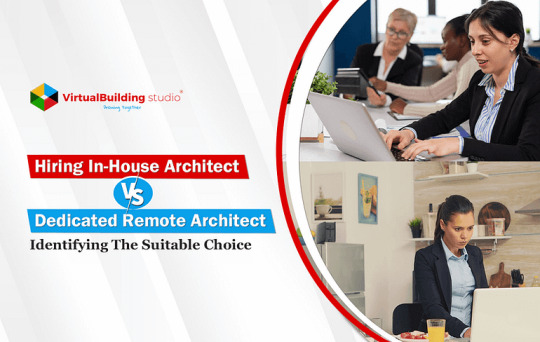
Recent studies highlight that firms opting for remote hiring can significantly decrease overall costs by up to 30% due to reduced overhead and physical office-related expenses.
Understanding the Roles
Before delving deeper into the comparative analysis, it’s crucial to understand the role of the in-house architect and a dedicated remote architect:
In-house Architect
An in-house architect is an employee directly hired by the company to work within the office premises. They collaborate closely with other team members and indulge in various project phases, from conceptualization to execution to facility management.
Success Story: :Global Automotive Leader Relies on Our Experts for Scan to BIM
Dedicated Remote Architect
A dedicated remote architect works for a company remotely, either as a full-time employee, consultant, freelancer, or an architect through a third-party agency.
They offer specialized services with their unique skill sets as per project requirements, providing flexibility and cost-efficiency.
In-house and Dedicated Remote Hiring: A Comparative Analysis
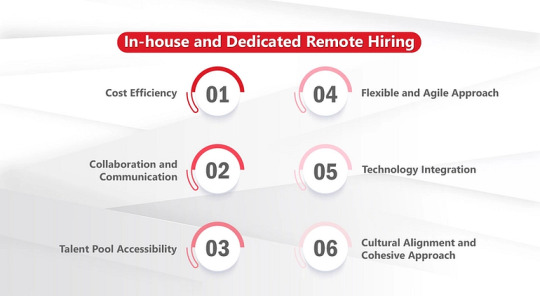
Cost Efficiency
Hiring In-house Architect: The in-house team requires a physical office setup, work gear, and other overhead expenses, increasing the total cost for the AEC company.
Hiring Dedicated Remote Architect: The remote hiring process eliminates the need for physical office space, equipment, and other overhead costs associated with in-house employees, resulting in a more cost-efficient approach.
Remote architects provide the freedom to work on a project basis, allowing for flexible payment methods and maintaining project budgets.
Collaboration and Communication
Hiring In-house Architect: An in-house architect establishes a seamless communication channel with other team members through in-person interaction, attending regular meetings, and effectively collaborating with project stakeholders.
Hiring Dedicated Remote Architect: Time zone differences can introduce coordination challenges, making it difficult to schedule meetings and arrange real-time communication with other team members.
Read More: :Rapid AEC Onboarding: Hire Top 1% Architects & Engineers in 3 Days
Talent Pool Accessibility
Hiring In-house Architect: In-house hiring might limit the access to potential recruits with specialized skill sets globally due to the limitation of preferably hiring local resources.
There is an unavailability of talented architects in certain areas, leading to increased recruitment time and competition for top talent.
Hiring Dedicated Remote Architect: Employing dedicated resources provides access to the global talent pool, enabling the firms to recruit professionals specialized with specific skills and expertise tailored to project needs.
The firms can also vary their scaling process by teaming up and down remote resources without long-term commitments.
Flexible and Agile Approach
Hiring In-house Architect: The physical staff has fixed working hours which might decrease the flexibility of managing tight deadlines and impede immediate amendments.
Hiring Dedicated Remote Architect: The time zone differences work to the advantage of the company as employees from varying time zones can provide round-the-clock progress on a project, accelerating the project delivery.
The dedicated remote hires are adaptable to different work ethics and flexible to varying project requirements, offering innovative solutions in tricky situations.
Technology Integration
Hiring In-house Architect: Long-term working professionals might be uncomfortable adapting to advanced methods and technology, hindering innovation and growth.
Hiring a Remote Architect: AEC firms can hire dedicated remote architects well-versed in technology and advanced digital tools, facilitating growth and efficiency. Employing professionals as per the project requirements might bring a fresh perspective to the project and an innovative approach toward problem-solving.
Read More : 8 AEC Outsourcing Mistakes to Avoid: Key Solutions and Alternatives
In-house Hiring or Remote Hiring: Considerable Factors for Decision Making
Choosing between an in-house architect and a dedicated remote architect depends on various factors that align with the project requirements and organizational goals:
Analyze the project complexity to understand if it demands any specialized skills or expertise and whether it is readily available locally.
Consider the project budget and financial constraints to choose between a cost-effective or cost-intensive approach.
Imagine hiring from the top 1% global talent of architects and engineers with the benefits of remote hiring integrated with a few qualities of in-house professionals. Isn’t it the most suitable approach for project execution with cost and time efficiency?
The AEC firms can abstain from the hassle of sourcing, recruiting, training, and retaining talent, by using the DRM solution.
Benefits of Adapting DRM solution
Hire resources who have already undergone the technical, logical, and communication testing process to simplify onboarding for the AEC companies.
The dedicated resource model evaluates architects and engineers on their soft and behavioral skills to ensure seamless integration and cultural fit.
Successful Client Stories
Whitten Architects — a Texas-based architecture firm, onboarded the right team of 3 dedicated resources with a Dedicated resource Model to enhance their capabilities in BIM technology and tools like Revit and AutoCAD.
With dedicated resources, the company has successfully shifted from traditional to modern technologies and witnessed a significant surge in project acquisition.
Internal skill shortages and disappointments with outsourcing led to the urgency of streamlined operations, enabling smooth and secure project operations across all projects.
Conclusion
The decision to select from in-house architects and a dedicated architect is not a one-size-fits-all process. However, limited circles, geographical boundaries, and our understanding of the hiring and managing process can certainly hinder growth and innovation for the AEC industry.
A tailored solution like DRM can facilitate the discovery of the right talent which is instrumental to project success.
Original Source : Hiring In-House Architect vs Dedicated Remote Architect: Identifying The Suitable Choice
Insightful Article:
Rapid Onboarding for the AEC Industry: Hire Top 1% Architects and Engineers in 3 Days
How do CAD Drafting Services Aids Successful Renovation Projects?
0 notes
Text
Revit Tip: Copy Views & 2D Without File Opening
Unlock a game-changing Revit hack that allows you to copy views and 2D elements between project s without opening each file. Simplify your workflow and enhance your Revit experience effortlessly. Reach out to us for seamless support and expert guidance.
Read more:
0 notes
Text
Hire Architect and engineer in USA
Looking to hire top 1% architects and engineers? Virtual Building Studio offers Hire dedicated architects and engineers with access to top 1% talent within 3 days, capable of handling multiple projects with no long-term commitment. | Virtual Building Studio Inc.
0 notes
Text
Mistakes to Avoid in AEC Outsourcing: Solutions & Alternatives
In the competitive landscape of the Architecture, Engineering, and Construction industry, firms are racing toward finding ways to enhance cost-effectiveness, efficiency, and productivity for their projects. One such strategy that has gained traction is outsourcing.
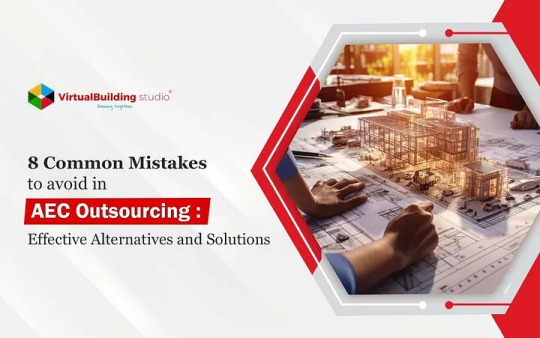
As per research and market reports, the global market for outsourcing services is expected to expand at a compound annual growth rate(CAGR) of 5.54% during the forecast period 2020–2027, leading to a total market size of US$904.948 billion by 2027.
Why AEC Firms Often Dislike Outsourcing: Key Reasons Explained
Absence of Direct Oversight:
Outsourcing Projects and tasks might cause difficulty in maintaining the same level of quality control as the office team. It is concerning for the AEC firms that the outsourced team might not adhere to the elucidated specifications and quality standards specified by the clients.
Inconsistent Standards and Guidelines:
The standards and guidelines vary for different firms for various projects. Outsourced teams usually follow specific standards, leading to inconsistent outcomes that may require rework or adjustments.
Risk of Data Breaches:
Working with Outsourced team members requires the sharing of sensitive data which increases the risk of breaches or intellectual property theft.
Confidentiality Issues:
AEC firms must maintain the confidentiality of client information and project details. Outsourcing can compromise the confidentiality of such sensitive information, making it challenging to protect.
Potential Budget Overruns:
Outsourcing is considered a cost-saving opportunity, but it can include hidden expenses such as management overhead, rework expenses, and quality control that offset initial savings.
Success Story : Global Automotive Leader Relies on Our Experts for Scan to BIM
Common Mistakes by Outsourcing Firms :

Unsatisfactory Work Quality
Maintaining work quality is imperative in the AEC industry, and outsourcing firms might deliver substandard work that fails to meet the stringent quality standards.
Poor work quality can lead to added rework costs, timeline overruns, and unsatisfied clients.
Communication Failure
The communication failure leads to unsatisfactory deliverables, necessitating rework and amendments.
Disruptive communication networks and time zone differences can result in inconsistent feedback and unresolved issues.
Disorderly Project Management
The Outsourcing team might struggle to align with the project delivery timeline with disorderly project management, causing schedule overruns and increased costs.
Lack of scope clarity and control over the project can result in scope creep where the scope of work keeps increasing.
Non-Compliance with Codes and Standards
Outsourcing firms may not be familiar with certain local building codes, regulations, or industry standards.
Ignorance of the required permits or approvals can bring a halt to the construction sites, leading to costly setbacks and legal disputes.
Remote Hiring: An Alternative Solution to Outsourcing
Remote Hiring refers to hiring a team or employees to work outside a conventional office environment with flexible working hours.
Hire architects and engineers with expertise in various domains as an extension to the internal team.
But, how can AEC professionals hire dedicated architects and engineers who are reliable and do not pose a threat to the commitments of the firm concerning finances and timelines?
Dedicated Resource Model

Benefits of adopting DRM solution
Access to the top 1% talent pool of architects and engineers
The selected professionals are tested for their logical and technical abilities and soft skills.
The onboarding time is reduced to 3 days with no burden of recruiting and training
A successful integration of DRM
AECOM — a leading infrastructure consulting firm, faced difficulties like limited BIM expertise, project timeline constraints, and high costs for outsourcing architects and engineers. With the Dedicated Resource model (DRM) solution, they onboarded 50 architects and engineers in just 8 months.
Not only did the company overcome these obstacles, but also achieved enhanced team efficiency and competitiveness without increasing the budget.
Conclusion
The AEC industry landscape is constantly changing and so are the ways firms are handling projects. The developing technologies, strategies, and business can significantly contribute to a project but also raise questions.
Original Source : AEC Outsourcing Mistakes: Solutions & Alternatives
Insightful Article :
How 3D Visualization Transforms the AEC Industry
Hire Top 1% Architects and Engineers in 3 Days
Benefits of BIM Modeling Services in Real Estate Construction
0 notes
Text
Rapid AEC Onboarding: Hire Top 1% Architects & Engineers in 3 Days
For the Architecture, Engineering, and Construction industry, an employee is the backbone that drives creativity, innovation, and collaboration in the company.

Looking at the Post-pandemic statistics, the AIA Chief Economist, Kermit Baker warned, “Since demand for design projects has been healthy over the last year, recruiting architectural staff to keep up with project workloads has been a growing concern for firms”.
Hiring and Retention Challenges in the AEC industry: A Tedious battle
Hiring is an imperative process for the seamless functioning of the AEC industry. Increasing labor costs, insufficient technically proficient staff, high turnover rates, and compromised work quality are not just nightmares for the AEC industry but a harsh reality for running a business.
As per a research report by the Engineering Management Institute, 96% of the surveyed industry leaders share how the shortage of skilled professionals will impede their company growth in 2024.
A McKinsey analysis report says, “As per the Infrastructure Investment and Jobs Act (IIJA), spending increases will result in a shortfall of 40,000 engineering and technical services workers in 2027 and another 40,000 in 2028”.
The Major Hiring and Retention Challenges faced by the AEC industry are-
Dwindling Talent Pool
The demand for AEC professionals continues to rise with the simultaneous dwindling of the talented labor pool, intensifying competition among firms to hire top-tier talent.
More Job Vacancies, Less Qualified Professionals
Recruiters are facing many challenges in finding efficient professionals to join the company’s workforce, even for easy-to-fill positions like project engineers, project managers, and equipment operators.
Tight Project Budgets
Another challenge is the tightening of project budgets due to economic fluctuations, continued supply chain disruptions, and rising inflation.
Success Story : Global Automotive Leader Relies on Our Experts for Scan to BIM
What is Onboarding?
Onboarding is an organized set of procedures designed to accommodate new hires into a company.
It involves introductory orientation, employee familiarization with the company’s hierarchy and culture, training and cooling period, and developing an understanding of the goals and principles of the company.
What is the 3-day Onboarding Process?
A 3-day onboarding process is a dedicated and systematic approach for hiring experienced and competent professionals into the company within just three days, eliminating the hassle of interviewing, training, and reviewing.
This process enables the companies to hire dedicated architects and engineers from the pool of the top 1% of architects and engineers who can inculcate their unique skill sets and expertise to the projects remotely.
How is a 3 — day Onboarding different from a 45-day onboarding process?

Benefits of the 3-Day Onboarding Process

With such expectations and project deliverables at stake, the 3-day onboarding process can be the crowning accomplishment for the company, offering work proficiency accompanied by reduced onboarding time.
Augment cost savings by 4X
That’s right! The 3-day onboarding process saves time and decreases the expenditure by 4 times. The companies get access to four top-grade resources at the cost of one for their US-based projects.
Success Story : AECOM Onboards 50 Architects and Engineers in 8 Months with B-O-T
Choose from a Culture-Fit talent pool.
Only hiring experts does not suffice for sustenance and results, but the cultural compatibility of the new talent is equally significant.
The 3-day onboarding process will allow the company to choose from a pool of premium 1% architects and engineers with excellent soft and behavioral skills, who are experienced in working across different cultural backgrounds and are hands-on with adaptation.
Eliminate Recruitment Setbacks
It is a tedious and stressful process for any AEC firm to find a suitable fit without negotiating on skill sets from a vast pool of talented architects and engineers.
Does this approach and its benefits tickle your curiosity? Are you also intrigued to expand your team of professionals with highly-skilled experts from the top 1% of the AEC industry within a 3-day onboarding time? If Yes, then the answer to all your queries is the Dedicated Resource Model (DRM) by Virtual Building Studio.
What is the DRM solution by Virtual Building Studio?
The Dedicated Resource Model (DRM) by Virtual Building Studio is a comprehensive solution for the AEC industry, facilitating the hiring of the best-suited professionals from the pool of the top 1% of architects and engineers within 3 days.
Distinguishing Features
Escape the hassle of sourcing, recruiting, training, and retaining talent.
Achieve 4 times the efficiency at a similar cost.
Choose from the top 200 architects and engineers with 9 years of work experience.
How to Integrate a DRM solution to an AEC project?
Adapting the Dedicated Resource Model (DRM) solution is a three-step process for any AEC firm that is as follows-
Grab the Phone and Make that Discovery call
Recruit Architects and Engineers suitable for the Job
Onboard and Scale as per requirement
A Successful 3-day Onboarding Story with DRM Solution
Expanding the team of dedicated architects and engineers from 1 to 5 with an average onboarding time of 3 days, doesn’t that sound strenuous? Not anymore.
Conclusion
Avoiding recruitment delays and minimizing the hiring time is essential in the AEC industry for maintaining competitive advantage, monitoring project timelines, and managing costs. By leveraging solutions such as DRM, companies can expand their talent pool and enhance hiring efficiency.
Original Source : Hire Top 1% Architects and Engineers in 3 Days
Insightful Article :
8 Common Mistakes to Avoid in AEC Outsourcing
BIM and LiDAR: The Perfect Pair for Quality Construction
Benefits of BIM Modeling Services in Real Estate Construction
0 notes
Text
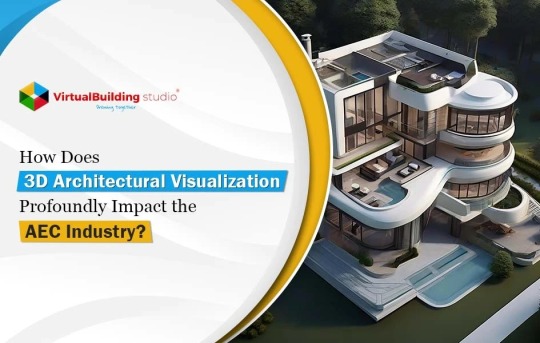
3D Architectural Visualization is a process of creating 3D BIM building models of the building’s interior and exterior from every possible perspective, unfolding every unique project feature. The illustrative and abstract possibilities eliminate uncertainty and allow informed decision-making before the construction process starts. Read more
#3D Architectural Visualization#AEC Industry#Architectural Visualization#3D Architectural#Architectural
0 notes
Text
The Benefits of MEP BIM Services for General Contractors — Real Estate
Building contractors not only build structures; but shape dreams, create homes, and build the future. They are responsible for project supervision and are expected to deliver quality-oriented outcomes.
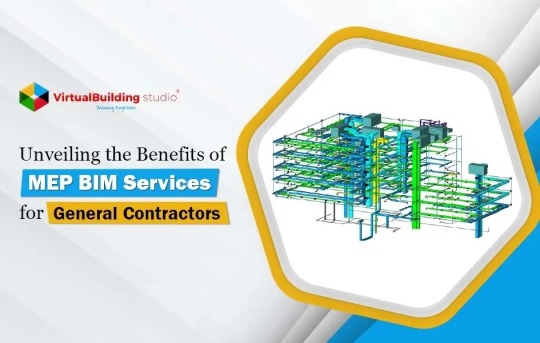
Introducing different provisions to the building construction process can streamline the workflow and amplify the project outcome.
MEP BIM services are one such provision that is imperative to the building construction process and catalyzes the MEP coordination and on-site execution for contractors.
Integrating these services can facilitate MEP BIM coordination for contractors and reduce the susceptibility to manufacturing and installation challenges.
Let’s move further to understand how MEP BIM services benefit the general contractors to overcome challenges and bring the imagined spaces to life. Source: MEP BIM Services for General Contractors
0 notes
